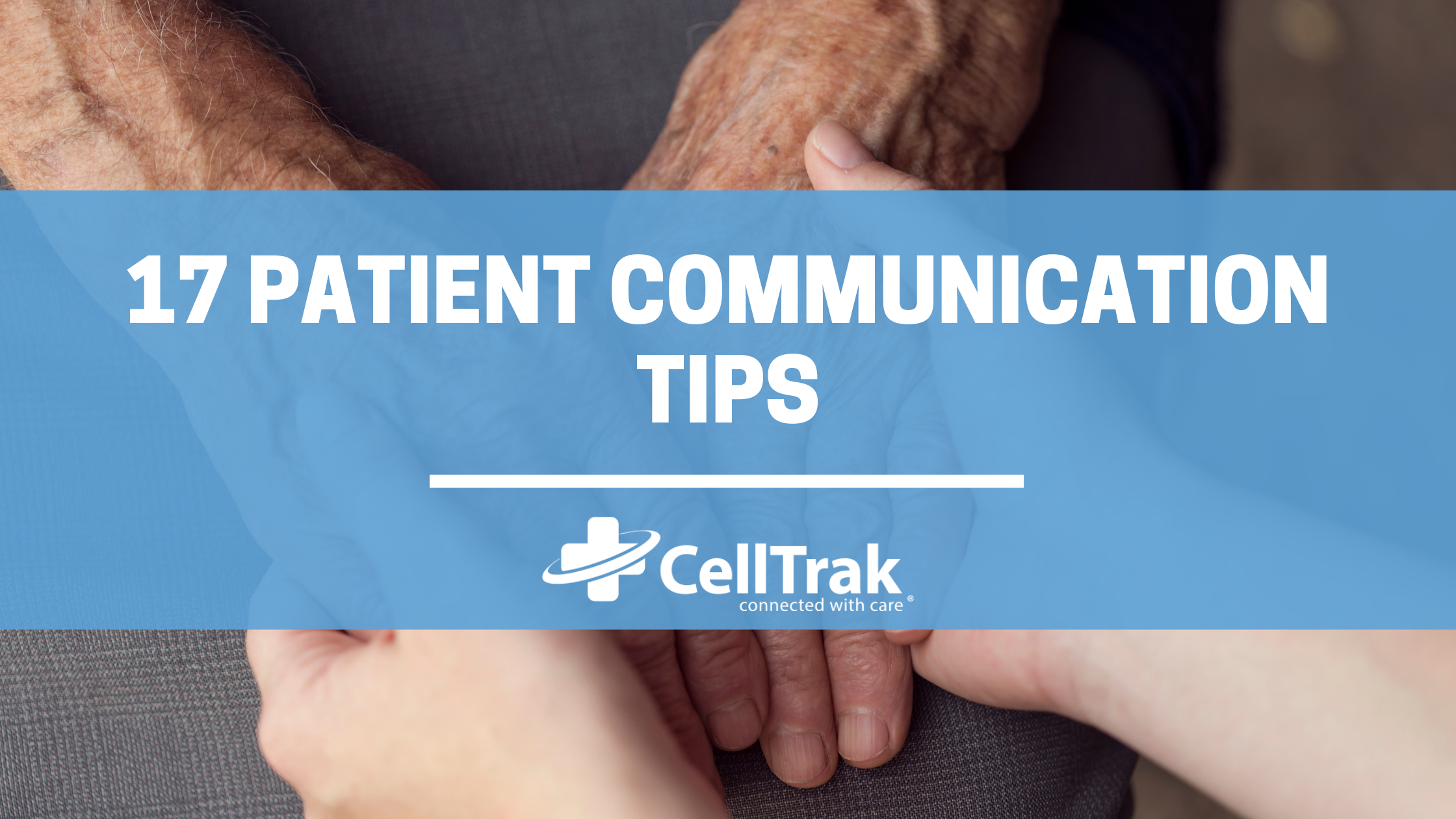17 Patient Communication Tips for Home Care Providers
Every time you visit your clients, you build important physical and emotional connections with them. Now it's time to strengthen those connections by optimizing your communication skills, so you can effectively convey vital information and instructions.
 Effective communication requires you to think from your clients' perspectives, so you can tailor your strategy to each individual. Here are some patient communication tips to follow when you’re working with different types of clients.
Effective communication requires you to think from your clients' perspectives, so you can tailor your strategy to each individual. Here are some patient communication tips to follow when you’re working with different types of clients.
Suggestions for Communicating with Elderly Patients
Communicating with elderly patients requires a gentle approach. You should:
- Take your time. Allow for extra time with elderly patients, offering the time and the attention they deserve and need. Although they’re generally eager for information, they may lack focus and attention. Be prepared to repeat instructions, and speak in a slow, clear manner.
- Accommodate special needs. If your client suffers from vision or hearing loss, sit closely and face-to-face. This lets the client focus on what you’re saying and reduces distractions. Although you might need to raise your voice for them to hear you, remember: There’s a difference between talking loudly and shouting.
- Keep it simple. Use short sentences and simple words to get your message across. Avoid using medical or technical language that the client may not understand.
Communicating with Patients from Different Cultures
Keep in mind that patients from different countries and cultures may have significantly different communication styles. In these instances, you must:
- Appreciate English’s complexity. English isn’t a simple language even for those of us who speak it natively (think through/though). Imagine how difficult it must be for a non-native English speaker to receive complex medical instructions and diagnoses in English. Use simple sentence structures, and be mindful of your word choices.
- Remember that silence is sometimes golden. Some people are uncomfortable with awkward silences. But when you’re working with clients who speak another language, that pause may indicate they’re translating and processing what you’ve just told them. Make sure they’ve understood what you’ve said — and don’t take a nod or a simple “Yes” as affirmation. It’s possible they’re just being polite. Ask follow-up questions and evaluate their response for comprehension.
- Avoid acronyms and expressions. Even something as simple as “10 a.m.” could be confusing for a non-English speaker. Avoid using acronyms and idioms that might be unclear or could be misunderstood. Instead, try saying, “10 in the morning.”
Tips for Communicating with End-of-Life Patients
When a patient nears the end of his life, stress and emotions can run high — with the patient, family, and caregiver. When communicating with end-of-life patients:
- Don’t evade bad news. You must be able to objectively and unemotionally break bad news to clients and their families — and then be prepared to answer their questions.
- Be clear. Communicate the expected course of the illness and what the patient can expect in terms of treatment options.
- Be sensitive to cultural and religious beliefs. Understand that the end of life is treated differently by different cultures and religions; be empathetic to their beliefs.
- Be patient. Patients near the end of life will likely experience a range of emotions, extreme fatigue, and increased stress. If they exhibit erratic behavior, consider how their frustrations and fears of the unknown are contributing to that behavior.
Involving Families in the Communication Loop
Communicating effectively with families of patients — keeping them involved and informed — is just as important as communicating with clients. When you speak with them, remember to:
- Be a good listener. Remind family members that being a good listener is an important part of being a good communicator. Teach them to not just listen to the patient but also to really hear what they’re saying.
- Be brave. Encourage families to be unafraid to ask uncomfortable questions, such as those surrounding finances, wills, and advance legal directives. Although they’re difficult to talk about, clarifying these things now will alleviate future stress and uncertainty.
- Gather all family members. Any family member who’s involved in the care of your patient in any way should be involved in routine meetings. Discuss not just the illness, but also how loved ones are feeling and what they can expect. Use email or videoconferencing to keep those who can’t attend in the loop.
Patient Communication Tips for All Client Types
The communication strategies offered below can be applied to all types of patients. Regardless of the patient or family member you’re talking with, remember to:
- Ask open-ended questions. Avoid asking questions that can be answered with a nod of the head or a simple yes/no because you’ll walk away wondering if they really understood you. Asking open-ended questions—they often start with who, what, when, where, or why— requires the client to give you a more complete answer.
- Instruct, pause, repeat. One of the easiest ways to ensure you’ve gotten your message across is to have the client repeat what you’ve just said in their own words.
- Write down instructions. After you’ve verbally communicated instructions to your patients, consider supplementing them with written instructions. Keep them simple — for example, use bullet points to reduce confusion. You can also use pictures, diagrams, and charts to clarify and enhance your message.
- Give them a turn. Don’t forget to give clients an opportunity to ask questions, get clarification, and express their emotions.
Improving Communication Skills to Improve Outcomes
Communication skills involve more than just talking. Body language, listening, hearing — they all have an impact on the message you’re trying to convey. When you effectively communicate your client’s medical information to them, they can use that information to improve their outcomes.
In an industry filled with medical jargon and complex terminology, using clear and effective communication is more important than ever. And with the right technology, communication is becoming easier than ever.
Contact CellTrak today to learn how our mobile care delivery solution can improve the communication between your caregivers and your agency and create a dedicated team that provides exceptional care.

